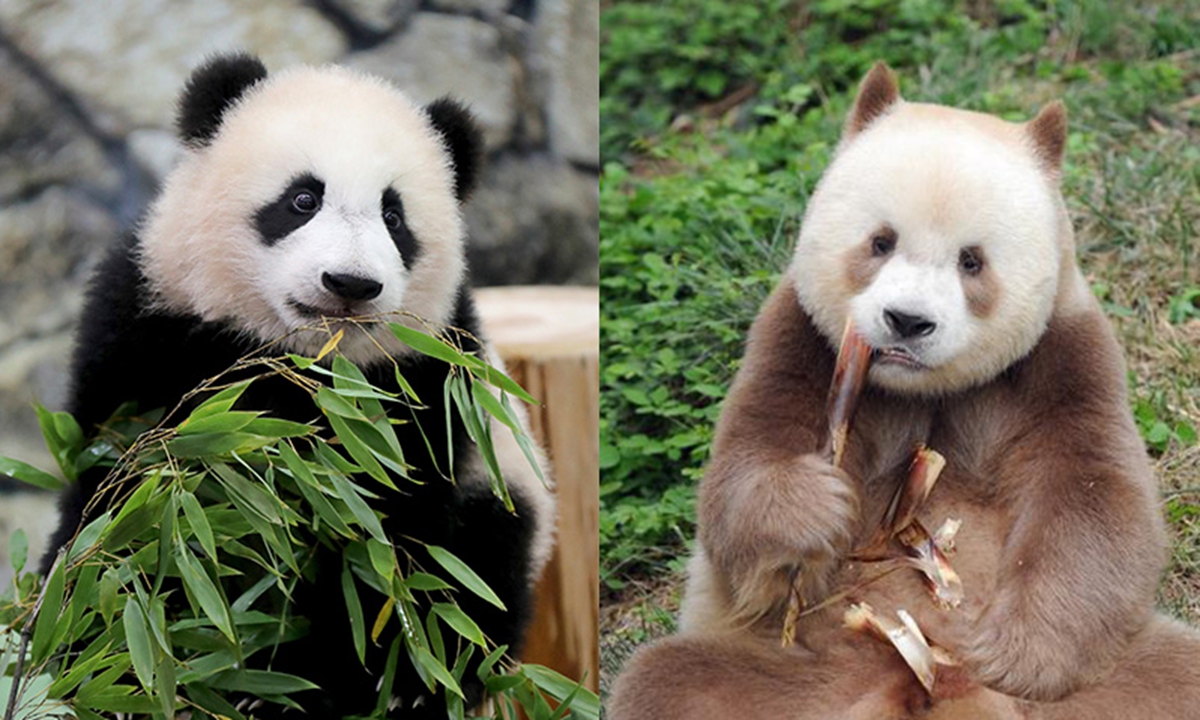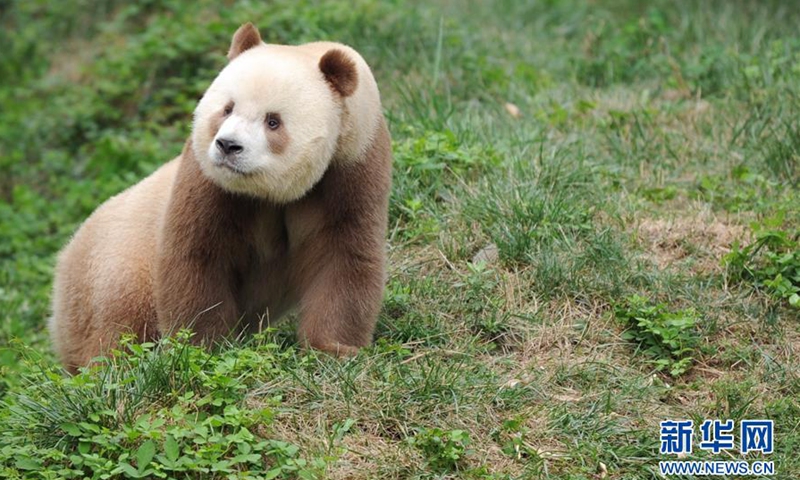
Sichuan panda (left) vs. Shaanxi panda (right). The panda found in NW China's Shaanxi Province looks more like cats with light and dark brown furs, while the more commonly-seen Sichuan pandas are more like bears with black and white furs. Photo: IC & Xinhua News Agency
Panda-lovers now have a new place outside the Chengdu breeding center to adore the loveable creature - the Qinling Panda Breeding Research Center in Northwest China's Shaanxi Province. From Friday, the public will be able to see 10 to 15 pandas, including one of the world's only brown panda raised in captivity.
The Qinling Panda Breeding Research Center announced last week that it will be open to the public on May 28, where 10 to 15 pandas, 50 crested ibis, eight snub-nosed monkeys, and 20 takins will make their public debuts, in addition to 20 other species of rare wild animals, local media SNRTV reported.
One of them is the world's only brown panda bred in captivity, an extremely rare subspecies found in the Qinling area. So far, only five have been found in the area.
The panda, named "Qizai", is 11 years old and in good health, media reported, citing zookeeper.
Visitors can book an appointment online at a price ranging from 20-30 yuan ($3-4.7).

The world's only brown panda bred in captivity, named "Qizai", belongs to an extremely rare subspecies found in the Qinling area. Qizai is now 11 years old and in good health, media reported, citing zookeeper. Photo: Xinhua News Agency
Unlike the familiar nominate subspecies in Chengdu, Northwest China's Sichuan Province, the Qinling pandas look more like cats with smaller skulls and overall sizes, while the former are more like bears. They also have differently coloured furs. The Qinling pandas have dark and light brown furs, rather than the commonly seen black and white.
Although they are close relatives, the two subspecies have been separated for 300,000 years, according to media reports.
Thanks to the constant efforts to improve the ecological environment in the Qinling Mountains, The Paper reported, the population of giant pandas has increased from 274 in the 1990s to 345 in recent years, accounting for 17 percent of the total number of giant pandas in the country, according to data released by the Shaanxi Provincial Forestry Bureau.
The growth rate and population density of giant pandas in Qinling both rank first in China, with an average of 7.8 pandas per 100 square kilometers. In other words, the Qinling Mountains have become the easiest place on Earth to encounter wild pandas.
The Qinling Panda Breeding Research Center was established in Xi'an, Shaanxi in 2018. It occupies a total area of 287.4 hectares and is divided into two parts, including 200 hectares of feed providing base and 87.4 hectares of breeding base.
Global Times
"captivity" - Google News
May 27, 2021 at 02:58PM
https://ift.tt/3wAKa2z
World's only brown panda raised in captivity to make public debut in NW China - Global Times
"captivity" - Google News
https://ift.tt/3b01anN
https://ift.tt/3dbExxU
Bagikan Berita Ini
















0 Response to "World's only brown panda raised in captivity to make public debut in NW China - Global Times"
Post a Comment